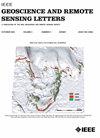Identifying and Evaluating the Nighttime Economy in China Using Multisource Data
IF 4
3区 地球科学
Q2 ENGINEERING, ELECTRICAL & ELECTRONIC
引用次数: 11
Abstract
The nighttime economy has always been regarded as an important part of the economy. Monitoring and evaluating the nighttime economic level is of great significance for promoting consumption and economic growth and optimizing industrial structure. However, it is difficult to evaluate the nighttime economy in China due to the data being unavailable. Hence, the objective of this study is to identify and evaluate the nighttime economy in China from different perspectives. First, a comprehensive nighttime economic index (CNEI) was constructed by integrating the nighttime light intensity and the points of interest data to represent the nighttime economic level. The CNEI was then verified using the business report data and socioeconomic statistical data. The results show that the CNEI is highly correlated with the verified data. We also found that Shanghai, Chengdu, Guangzhou, and Shenzhen have the highest CNEI values, and the CNEI values of southern cities are generally higher than those of northern cities. This is mainly because the differences in the lifestyles, climatic factors, and cultural customs in the north and south determine the nighttime economic activities. Counties with very high CNEI values are mostly located in the capital cities of each province. The spatial agglomeration at the county level performed more strongly than that at the prefecture level. The study will not only help better understand the nighttime economic level on different scales but also contribute to city-level policymaking on urban planning and economic development.利用多源数据识别和评价中国夜间经济
夜间经济一直被视为经济的重要组成部分。监测和评价夜间经济水平对促进消费、促进经济增长、优化产业结构具有重要意义。然而,由于缺乏相关数据,很难对中国的夜间经济进行评估。因此,本研究的目的是从不同的角度来识别和评估中国的夜间经济。首先,综合夜间光照强度和兴趣点数据,构建夜间综合经济指数(CNEI),表征夜间经济水平;然后使用商业报告数据和社会经济统计数据验证CNEI。结果表明,CNEI与实测数据高度相关。上海、成都、广州和深圳的CNEI值最高,南方城市的CNEI值普遍高于北方城市。这主要是因为南北生活方式、气候因素和文化习俗的差异决定了夜间的经济活动。CNEI值非常高的县大多位于各省省会城市。县域空间集聚表现强于地域空间集聚。该研究不仅有助于更好地了解不同尺度的夜间经济水平,而且有助于城市层面的城市规划和经济发展决策。
本文章由计算机程序翻译,如有差异,请以英文原文为准。
求助全文
约1分钟内获得全文
求助全文
来源期刊

IEEE Geoscience and Remote Sensing Letters
工程技术-地球化学与地球物理
CiteScore
7.60
自引率
12.50%
发文量
1113
审稿时长
3.4 months
期刊介绍:
IEEE Geoscience and Remote Sensing Letters (GRSL) is a monthly publication for short papers (maximum length 5 pages) addressing new ideas and formative concepts in remote sensing as well as important new and timely results and concepts. Papers should relate to the theory, concepts and techniques of science and engineering as applied to sensing the earth, oceans, atmosphere, and space, and the processing, interpretation, and dissemination of this information. The technical content of papers must be both new and significant. Experimental data must be complete and include sufficient description of experimental apparatus, methods, and relevant experimental conditions. GRSL encourages the incorporation of "extended objects" or "multimedia" such as animations to enhance the shorter papers.
 求助内容:
求助内容: 应助结果提醒方式:
应助结果提醒方式:


